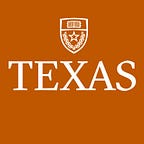Art History Doesn’t Conform to National Borders
A new exhibition “Mexico Modern” explores two decades of dynamic cultural exchange between Mexico and the United States.
Art movements rarely conform to national borders, nor do they result from the efforts of artists alone. Never has this been truer than during the 20th century’s “Mexican moment.”
A new exhibition “Mexico Modern: Art, Commerce, and Cultural Exchange, 1920–1945” on view now at UT Austin’s Harry Ransom Center, explores two decades of dynamic cultural exchange between Mexico and the United States. The story begins in 1920, when the conclusion of the armed phase of the Mexican Revolution ushered in new cultural ideals and programs. It ends in 1945, by which time Mexican art had entered the U.S. mainstream.
The exhibit features more than 200 objects including paintings, photographs, jewelry and books, as well as ephemera. The exhibition also focuses on the artists and “promoters” — collectors, curators, gallerists and publishers — who created and disseminated the art of the period. Many of these individuals traveled back and forth between the two nations, and collectively they became an important part of the historical narrative. The exhibition features well-known artists such Diego Rivera and Frida Kahlo alongside journalist and anthropologist Anita Brenner, curator René d’Harnoncourt, and publishers Alfred and Blanche Knopf, among others.
The “Mexico Modern” exhibition was created by visiting curators Donald Albrecht, curator of architecture and design at the Museum of the City of New York; and Thomas Mellins, independent curator and author. Albrecht and Mellins began their work on the exhibition by partaking in the Harry Ransom Center’s fellowship program.
“We discovered that this complex story could be told almost exclusively from the Center’s varied and rich collections of paintings, drawings, photographs, books and correspondence,” said Mellins, “providing a unique opportunity to present a memorable cast of characters, whose connectedness is revealed not only by great works of art, but also in more personal ways, through letters and snapshots.”
Ninety-five percent of the materials on view come from the Ransom Center’s own collections.
“Some of these individuals were famous in their lifetimes,” Albrecht said. “Others will be discoveries for some people visiting the show. One of the great pleasures of organizing ‘Mexico Modern’ has been to give these highly creative, though sometimes overlooked, people their due.”
Explore the exhibition with a guided tour. Tours happen daily at noon, with additional tours on Thursdays and weekends. Tour info. Upon closing at the Ransom Center on Jan. 1, 2018, the exhibition will travel to the Museum of the City of New York, where it will be on view beginning in late June 2018.
Originally published at news.utexas.edu on October 23, 2017.
